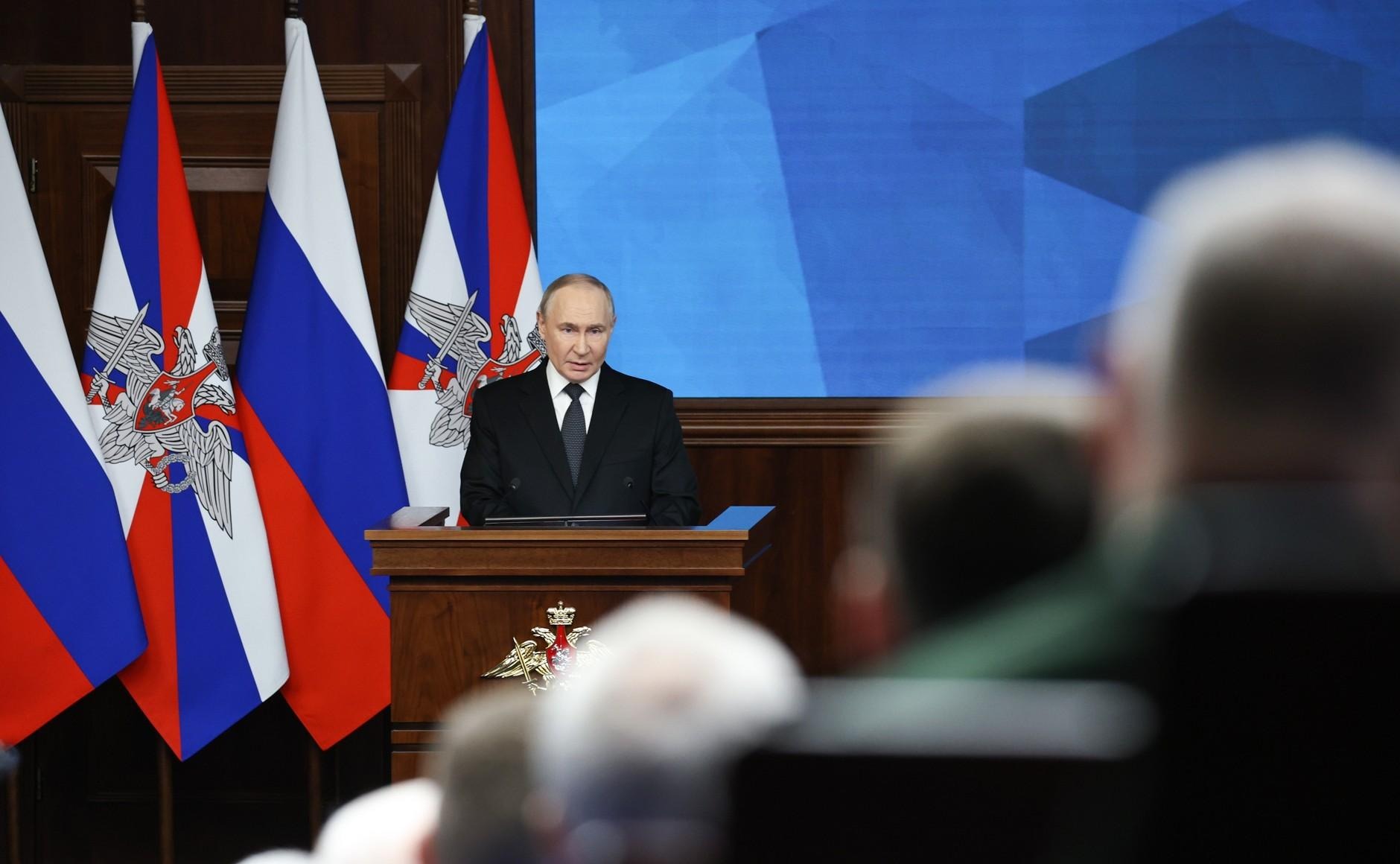
Washington Hits Russia’s Uranium Industry
Washington Hits Russia’s Uranium Industry
Executive Summary:
- The United States is closing its uranium market to Russia, a move that could have ripple effects on other Russian industries further disrupting the struggling economy.
- Russia is expected to seek alternatives to the US market by increasing uranium exports to “friendly” countries and working with uranium-producing countries in the Global South.
- The forfeiture of the US market is an unpleasant development for Russia, but Moscow has options and will likely manage to avoid the collapse of its uranium industry.
On May 14, US President Joe Biden signed a law banning the import of Russian uranium, with exceptions for some US operators who preserved the right to import from Russia until 2028 (US Department of Energy; Meduza, May 14). Moscow’s official response was predictable. Russian presidential press secretary Dmitry Peskov called the ban “an example of unfair competition” based on the United States’ inability “to openly compete with [Russia] in the international arena.” Anatoly Antonov, Russia’s ambassador to the United States, stated that “the [Biden] administration is continuing its failed line aimed at incurring [Russia’s] strategic economic defeat. … This démarche leads to losses not just in Russia but also in the global uranium market, leading to new shocks in international economic relations” (Kommersant, May 14). While the United States is closing its market to Russia, Moscow has options for how to respond to Washington’s move. A combination of three factors—Russia’s prominent position in the global uranium industry, growing interest and use of nuclear energy in the non-Western world and Global South, and the brittleness of the West’s supplies—will likely result in Russia’s nuclear energy industry being able to sustain the loss of the US market in the short term. The Kremlin’s turn to the Global South will likely coincide with its influence operations in the region, which are already intensifying (see EDM, February 22, 23).
Since February 2022, even in the face of Western sanctions, Russia has remained a key player in the global production of uranium. According to UN Comtrade, in 2023, Russia ranked first among uranium-producing countries exporting $2.7 billion worth of uranium, a 31-percent growth in monetary terms and a 32-percent increase in total volume as compared to 2022. In 2023, Russia’s global share among uranium-producing countries stood at around 30 percent, followed by France and the United Kingdom (Pronedra.ru, April 29).
The strategic value of uranium production and nuclear industries for Russia goes well beyond the monetary value of exports. Uranium production could potentially affect other industries as well, further disrupting the already fraught domestic economy (see EDM, January 23, February 12, April 3). Russia’s top officials had doubted the US resolve to ban imports of Russian uranium (Lenta.ru, December 12, 2023). Russian sources has claimed that this industry was “one of the most painful dependencies that the West still has on Russia.” Some even asserted that Rosatom had a global monopoly on some areas (Iarex.ru, April 23). Other Russian experts are saying that the loss of the US market will not have a significant pull on the Russian budget. Yet, in 2022, more than 90 US commercial reactors were reportedly powered by Russia-imported uranium in 2022, and US commercial interest in Russian uranium was on the rise (Lenta.ru, May 1). Thus, Washington’s refusal to import Russian uranium will represent a significant short-term loss, which might become a problem for other industries (Newizv.ru, April 24).
Russia will likely exercise three strategies to mitigate the impact on its uranium-producing industry. First, Moscow may look to increase its exports to so-called “friendly nations,” primarily countries of the Global South. According to Russian economic forecasts, North America—the world’s leader in nuclear energy production—will slowly lose its dominant position. Producers in West and Central European countries are expected to experience a rapid and sharp decline in the use of nuclear-generated power. The most interesting market is Asia, where the use of nuclear power is quickly increasing. Out of 450 nuclear reactors in the world, 150 are currently located in Asia, which, according to Russian experts, makes Asian markets the best substitute for the loss of Western revenue (Kommersant, April 24). Specifically, Russian sources name Türkiye and Bangladesh as nations that could become Moscow’s initial target markets, with other non-Western countries following suit later (RIA Novosti, November 9, 2023). While Rosatom executives claim to be on their way to strengthening ties with the Global South, they still hope to continue working with so-called “unfriendly countries” (TASS, March 26).
Second, Russia will then build more partnerships with uranium-producing countries in the Global South. Namibia and Tanzania are two such examples. Rosatom announced that in 2029, the company plans to start commercializing uranium in Namibia, which reportedly holds 7 percent of the world’s uranium reserves. Russia expects to invest $500 million in the project (RIA Novosti, July 19, 2023). In Tanzania, Rosatom is working on the Mkuju River project at the Nyota deposit, which contains 152 million tons of triuranium octoxide, a uranium compound, and a yearly production capacity of 3,000 tons (Atomic-energy.ru, July 20, 2023).
Third, Russia will likely cut back uranium supplies to “unfriendly countries,” of which France would be the primary target. France is the leading proponent of nuclear energy in the European Union, with approximately 75 percent of its energy consumption coming from nuclear-generated power. France secures a large part of its uranium supplies from Africa, specifically from Niger, which is the world’s seventh-largest producer of uranium and the second-largest producer in Africa. Notably, supplies from Niger covered 15 percent of France’s total imports of uranium and approximately one-fifth of the European Union’s imports. That is why the decision of Niger’s military junta to introduce a ban on exports of uranium and gold to France in August 2023 made Paris uneasy (Lenta, August 1, 2023). In this highly unstable country, ravaged by Islamist terrorism but handsomely endowed with natural resources, France sources uranium from three mines: Somair (63 percent belongs to the French company Orano), Cominak (Orano owns a 59-percent stake), and Imouraren (Orano owns a 66-percent stake) (RIA Novosti, August 1, 2023). Even more dangerous, Niger has been actively collaborating with and hosting the Wagner Group/African Corps mercenaries, having revoked previously signed agreements on military collaboration with the United States and France (see EDM, April 11; Inosmi.ru, April 21).
Thus, while Russia’s forfeiture of the US market is an unpleasant surprise, Moscow has options and will likely manage to avoid the collapse of its nuclear and uranium-producing industries.


